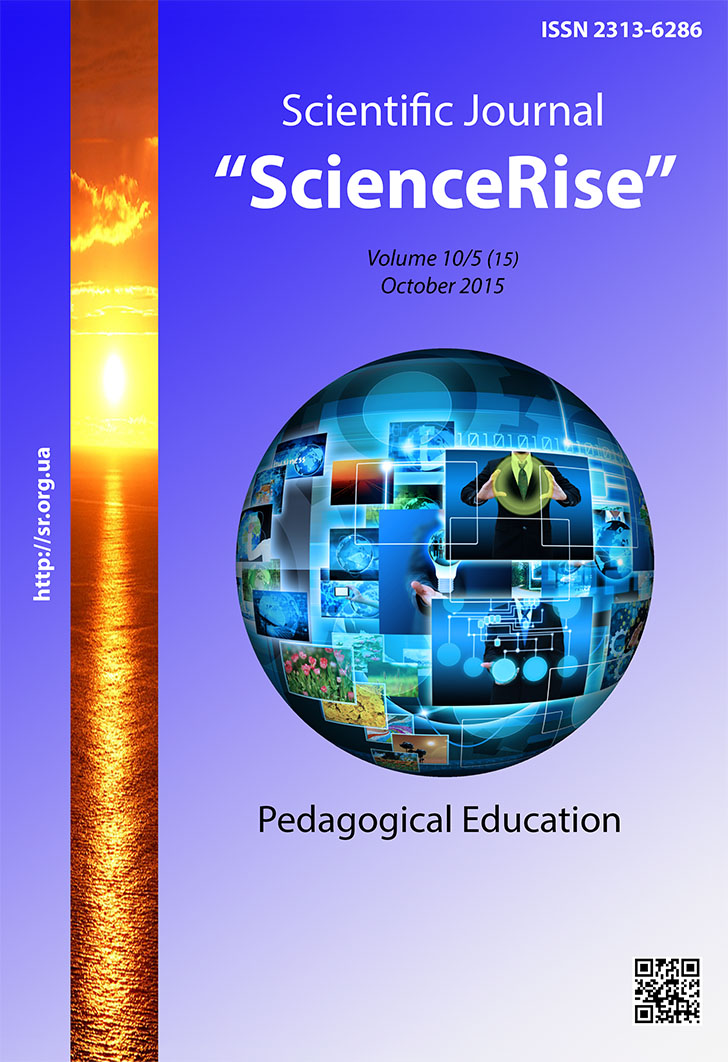The author’s ability in creative and performing training of the future music teacher
DOI:
https://doi.org/10.15587/2313-8416.2015.51935Keywords:
creative and performing training, spiritual development, composer-performer activity, author’s abilityAbstract
Theoretical and methodological foundations of creative and performing training of the future music teachers in higher education teaching system are investigated. The notion of "author’s ability" of the future music teacher is formulated. It is proved a value of creative and performing training of future professionals. It is determined a methodical system of creative and performing training based on the introduction of innovative technology of composer-performer activities aimed at forming the author’s ability of future professionals
References
Gorbenko, O. B. (2012). Music and performing training future teachers of music: Teach. method. Guidances. Kirovograd, 84.
Yeremenko, O. V. (2009). Masters of music: theory and methodology. Kyiv: NEA Dragomanov, 434.
Zavalko, K. V. (2013). Educational Innovation in theory and practice of music education. Cherkasy: Cherkasy TSNP, 520.
Segeda, N. A. (2011). Professional development of the teacher of music: history, methodology, theory. Kyiv: NEA, 273.
Zyazyun, I. A., Sagach, G. M. (1997). Beauty pedagogical action. Kyiv: Ukrainian-Finnish Institute of Management and Business, 302.
Goncharenko, U. S., Malovany, Y. I. (1993). Socio-pedagogical problems of development of Ukrainian school. Mother School, 4, 51–56.
Voitko, V. I. (1982). Psychological dictionary. Kyiv: High School, 215.
Padalka, G. M. (2008). Pedagogy Art: Theory and methods of artistic disciplines. Kyiv: Education of Ukraine, 274.
Ilyenkov, E. V. (1991). Philosophy and culture. Moscow: Politizdat, 494.
Rudnytska, O. P. (2005). Pedagogy general and artistic. Ternopol: Educational book – Bogdan, 358.
Downloads
Published
Issue
Section
License
Copyright (c) 2015 Тетяна Борисівна Стратан-Артишкова

This work is licensed under a Creative Commons Attribution 4.0 International License.
Our journal abides by the Creative Commons CC BY copyright rights and permissions for open access journals.
Authors, who are published in this journal, agree to the following conditions:
1. The authors reserve the right to authorship of the work and pass the first publication right of this work to the journal under the terms of a Creative Commons CC BY, which allows others to freely distribute the published research with the obligatory reference to the authors of the original work and the first publication of the work in this journal.
2. The authors have the right to conclude separate supplement agreements that relate to non-exclusive work distribution in the form in which it has been published by the journal (for example, to upload the work to the online storage of the journal or publish it as part of a monograph), provided that the reference to the first publication of the work in this journal is included.

